2017 porsche 911 turbo s first test review
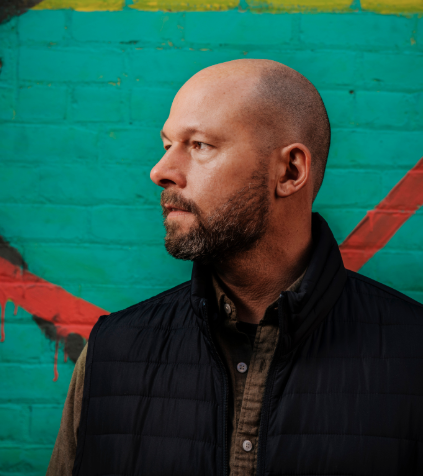
Revelations about our current remarkable automotive era sometimes flit into consciousness in the midst of an experience -- stabbing the gas in a Dodge Hellcat, for example, or noting an SUV filled with the whole family and luggage is averaging 31 mpg. Other, rarer times, our golden age is neatly packaged in a singular, immersive product that encompasses nearly everything we’ve learned in 115 years of automotive technology.
Bạn đang xem: 2017 porsche 911 turbo s first test review
The Porsche 911 Turbo S is the latter.
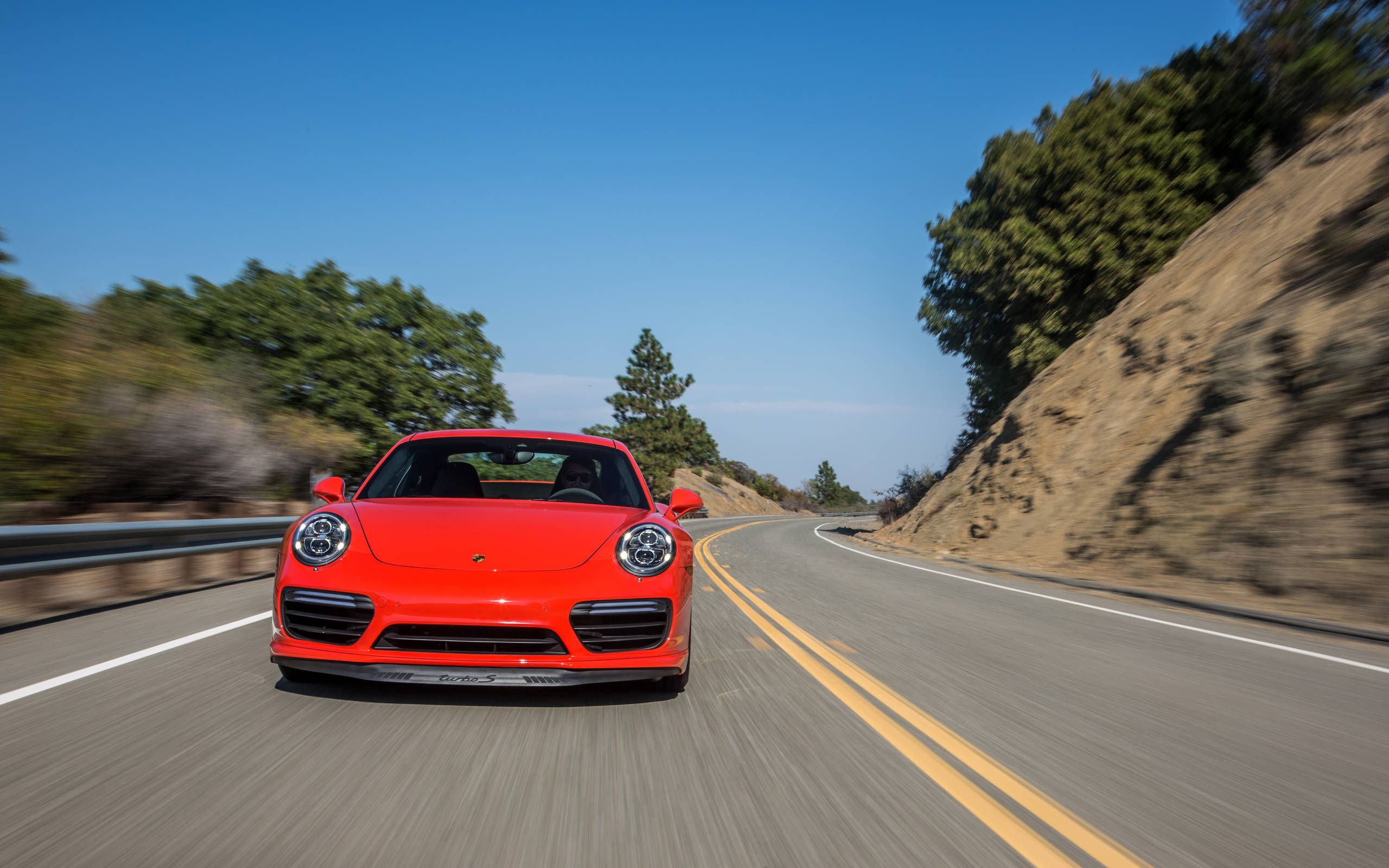
The 2017 Porsche 911 Turbo S, shown here, makes 580 hp from its twin-turbo flat six engine for a top speed of 205 mph.
Taken from any quantitative angle -- acceleration, top speed, braking, handling, interior capacity, comfort and convenience -- this is a remarkable machine packed with technology and nearly devoid of flaws. Those few flaws are ergonomic items easily rectified, placing them in the realm of quirks: The visors don’t extend to cover the side windows; there’s nowhere to put your phone; the cupholders are still ridiculous. All things you’ll get over.
First the basics: Under the rear deck, somewhere, is a 3.8-liter twin-turbocharged flat six. You’ll have to trust Porsche on that one, because you can’t see even a hint of it without putting the car on a lift. It sure sounds like a flat six, and more so, it feels like a 580-hp flat six (540 in the non-S Turbo). That power is sent through Porsche’s PDK dual-clutch seven-speed transmission through an AWD system for an end result of 2.8 seconds to 60 mph on the way to a 205 mph top speed. Again, these otherworldly numbers apply to the S model; “ordinary” 911 Turbos wander to 60 in 2.9 seconds and achieve a terminal velocity of just 198 mph.
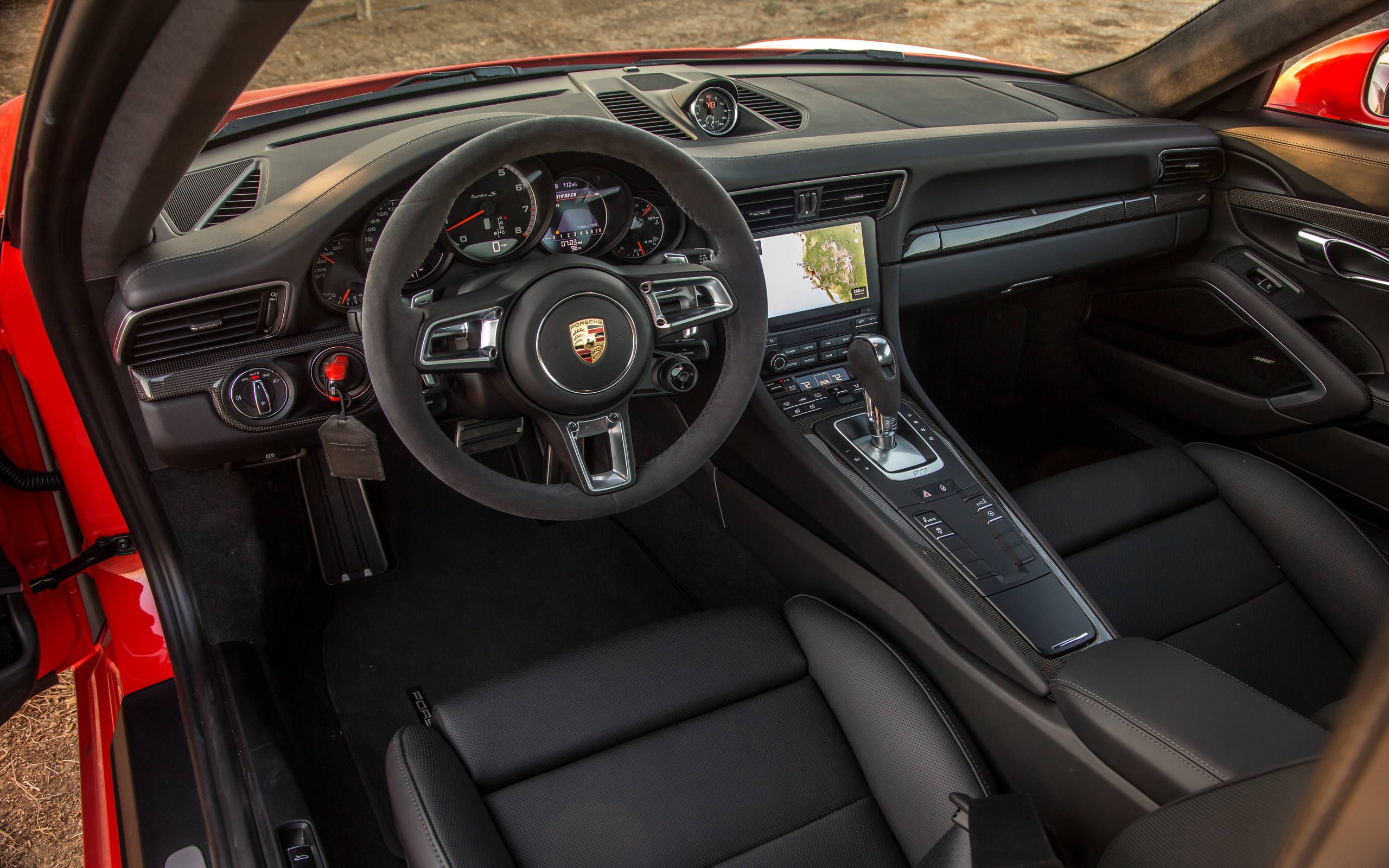
The 2017 Porsche 911 Turbo S, shown here, makes 580 hp from its twin-turbo flat six engine for a top speed of 205 mph.
There’s no stick shift, so don’t even ask. Unfortunate? Yes and no: Yes, because there’s no substitute for the tactile feel of rowing your own gears with a proper manual transmission; no because PDK is faster than you, thus making the car faster, and that’s the most-important thing to a lot of buyers. Besides, PDK is in line with the 911 Turbo’s "do anything" ethos, and blipping through its gears can be as much fun as a manual, despite being a different kind of fun -- more aural and seat-of-the-pants entertainment than mechanical satisfaction.
All 911 Turbos now come standard with the Sport Chrono package, which, among other things, includes a rotary dial at about the 4-o’clock position on the steering wheel. Four settings (comfort, sport, sport plus and individual) alter throttle settings, steering, suspension and the like. As you’d expect, the first three are preprogrammed, while the Individual mode lets the driver tailor his or her combinations -- comfort steering with sport plus throttle response and stiff suspension? Ja!
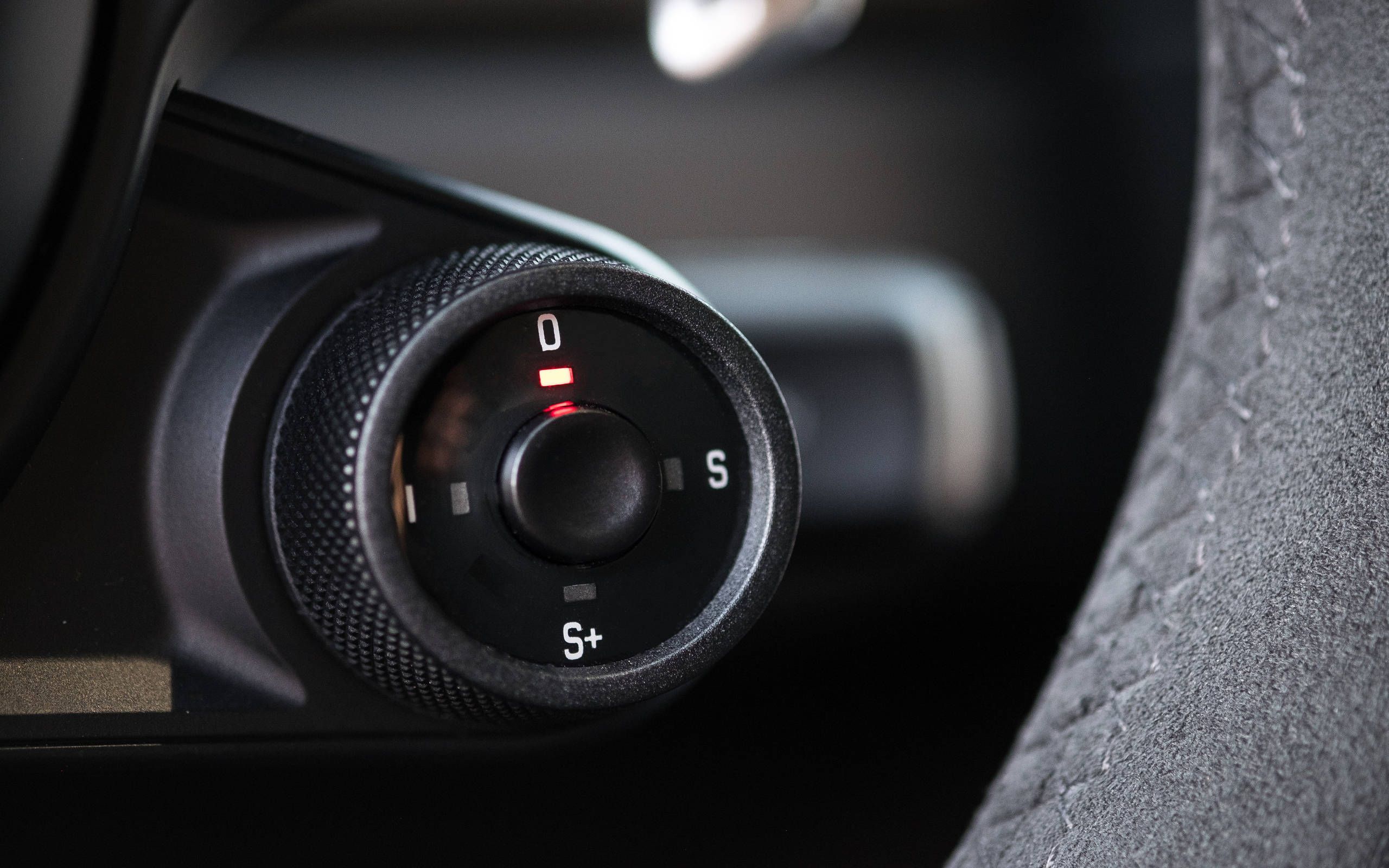
The 2017 Porsche 911 Turbo S, shown here, makes 580 hp from its twin-turbo flat six engine for a top speed of 205 mph.
Then there’s the button in the middle of the dial. It’s called “Sport Response” and is devoid of markings in typically understated German fashion -- it should have a biohazard symbol or at least bear an exclamation point. When pressed, at any speed and in any setting, the car goes into “fight or flight” mode, essentially readying itself to hyperdrive away from anything nearby. Porsche says it’s “for passing” in much the same way a tactical nuke is “for crowd control”; to the average Camry driver, Sport Response will render you a blur in the side window on your way to being a distant pair of taillights.
Finally, when you’re stuck in traffic or need to find your way around, Porsche has updated its PCM navigation/stereo/infotainment system to operate more quickly and naturally. Pinch and swipe movements complement touchscreen buttons, and the entire system is far faster and more intuitive than the previous generation.
Xem thêm: Đại Học Sân Khấu Điện Ảnh: Điểm Chuẩn Đại Học Sân Khấu Điện Ảnh Hà Nội
What"s it like to drive?
Where do you want to start? We can do Northern California backroads, commuting to the office or blasting around the racetrack, or anywhere in between; to paraphrase an internet meme, 911 Turbo don’t care, so let’s start at Thunderhill Raceway near Willow, California:
Crank the dial to sport-plus, accelerate out onto the track, and have yourself a damn fine time trying to keep up with famed driver Hurley Haywood. No Hurley? Probably for the best since making buyers of its $180,000 flagship feel inadequate isn’t in Porsche’s best interest. Whether or not you’re following a pro, the 911 Turbo S will make you a fast driver simply because it’s such an ungodly fast car; there’s only a hint of turbo lag, and PDK knows the gear you want 90 percent of the time -- for better results on a familiar track, use the paddles for what truly are instant shifts. Steering is of the lovely point-and-shoot variety with just enough assist to keep the driver from feeling beat-up at the end of the day, and in sport-plus, the electronics will still let you play with a little trailing-throttle oversteer without going full-on widowmaker.
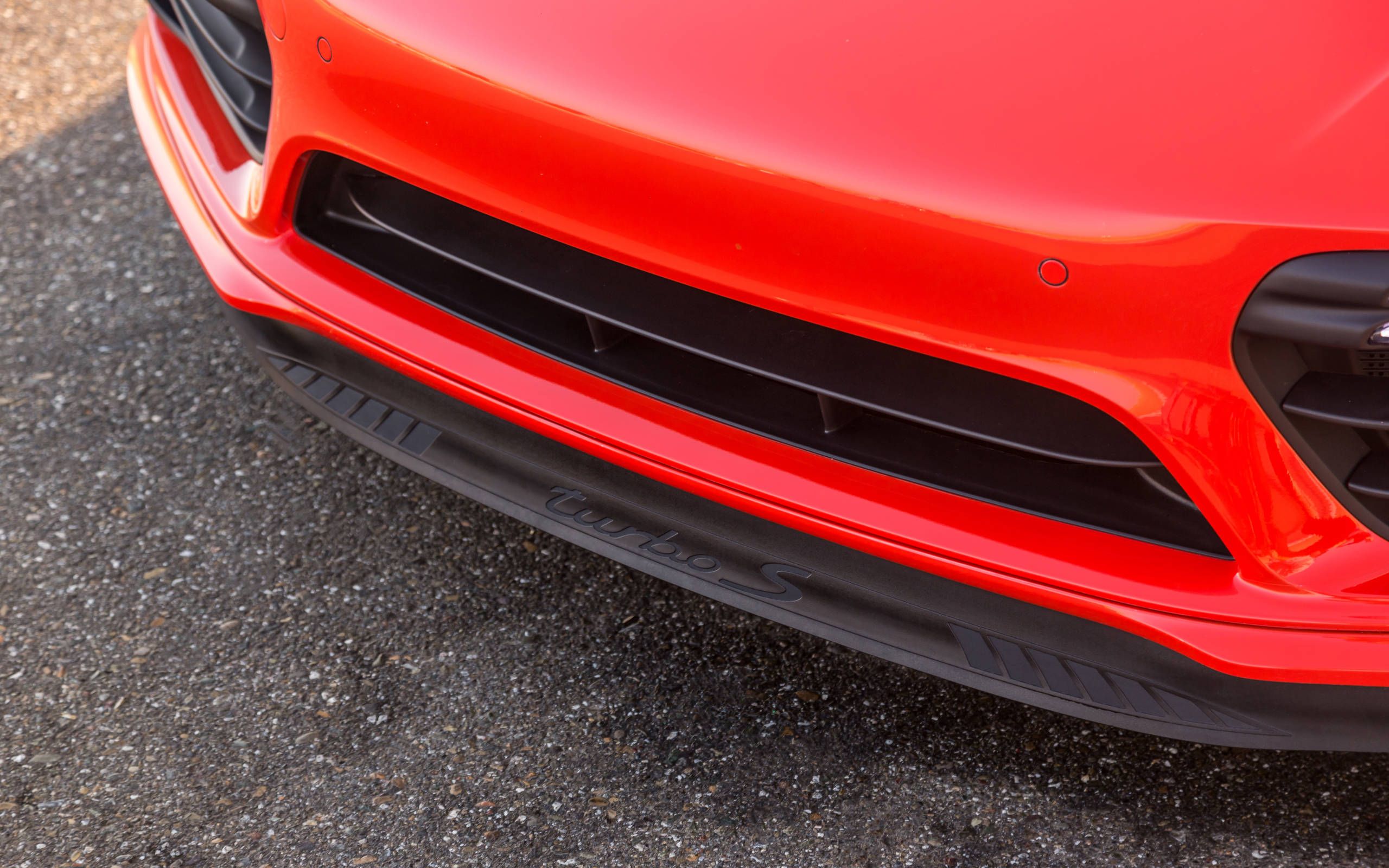
The 2017 Porsche 911 Turbo S, shown here, makes 580 hp from its twin-turbo flat six engine for a top speed of 205 mph.
The cast iron brakes on the regular Turbo (carbon ceramics are optional there, standard on S) deliver outstanding pedal feel and might be easier to live with over the long term, but the carbon brakes grab hold RIGHT NOW, never showing more than a hint of fade despite hours lapping Thunderhill in 100-degree temperatures. If there’s a downside to the carbon ceramics, its that they go from nothing to tickling the ABS in a fraction of a second -- there’s more resolution in the iron brakes’ pedal even if their capabilities aren’t as extreme.
As good as the 911 Turbo is on the undulating curves of Thunderhill Raceway, it’s also where one most feels the weight; the track isn’t this car’s natural home, at least in the sense of a Cayman GT4 or one of the brand’s other specialized race weapons. There’s plenty of power, brake and tire to help it outperform 98 percent of the cars on the market, but it’s all fully employed whipping 3,600 pounds of 911 into this kind of frenzy. Can you use it for destroying a road course during a track day? Most definitely. But the 911 Turbo probably won’t be the choice for a buyer seeking a Porsche primarily for such antics.
Not being masochists, our laps at Thunderhill were negotiated with air conditioning at full blast and cooled seats (where available) cranked. We drove in refrigerated comfort at 9/10ths for nearly 250 miles, the outside thermometer peaking at 106 degrees, after which we topped off the fuel tanks and traveled sometimes-lazily, sometimes-quickly over California’s winding backroads to an overnight in Napa, completely incident free.
Maybe this isn’t a big deal to you; to us, hammering on machinery like that, then driving like nothing happened is kind of…magical. So is the 911 Turbo on winding back roads. Where the car excels is grand touring, and in northern California’s Napa, Sonoma and Lake counties, the 911 Turbo driver wants for nothing…except possibly a place to put the damn phone. Even in sport mode, the ride is firm without being harsh, engine note and shifts harmonize in a gorgeous mechanical salsa and, if you absolutely must, there’s enough sound deadening to take a phone call via the Bluetooth connection without having to yell.
The 2017 Porsche 911 Turbo S, shown here, makes 580 hp from its twin-turbo flat six engine for a top speed of 205 mph.
Do I want one?
That depends: Do you have an insatiable need to be gawked at, gazed upon constantly by passersby with equal parts envy and disdain? Do you have what certain presidential contenders might refer to as "small-handedness"? If so, the 911 Turbo just isn’t going to cut it. It is, as it has always been, an under-the-radar exotic, identifiable to 95 percent of the buying public only as “a Porsh.”
Can you ignore it if your neighbor thinks you bought a Cayman instead of the best multipurpose sports car in the world? Hopefully yes; otherwise he wins and you lose out on everything Porsche has packed into the Turbo. You don’t want that to happen.
NOTE: An earlier version of this article listed the curb weight at 4,387 lbs (the gross vehicle weight rating); actual curb weight for the 911 Turbo S is 3,527 lbs.
Vehicle Model Information
ON SALE: Now
BASE PRICE: $189,150
POWERTRAIN: 3.8-liter H6, 7-speed PDK dual-clutch automatic, AWD
OUTPUT: 580 hp, 553 lb-ft torque
CURB WEIGHT: 3,527 lbs
0-60 MPH: 2.8 sec
PROS: Blindingly fast, beautifully built and usable day in, day out
CONS: Too understated?
This content is created and maintained by a third party, and imported onto this page to help users provide their email addresses. You may be able to find more information about this and similar content at piano.io











